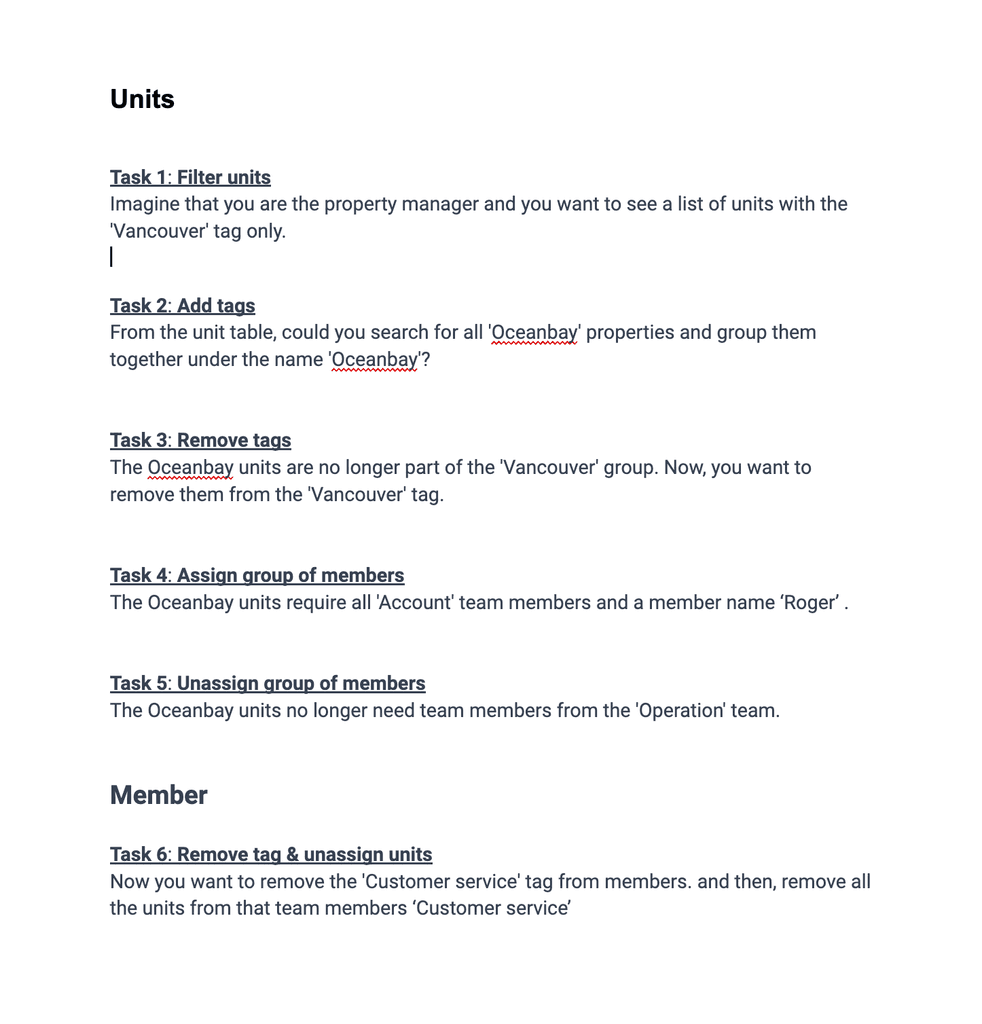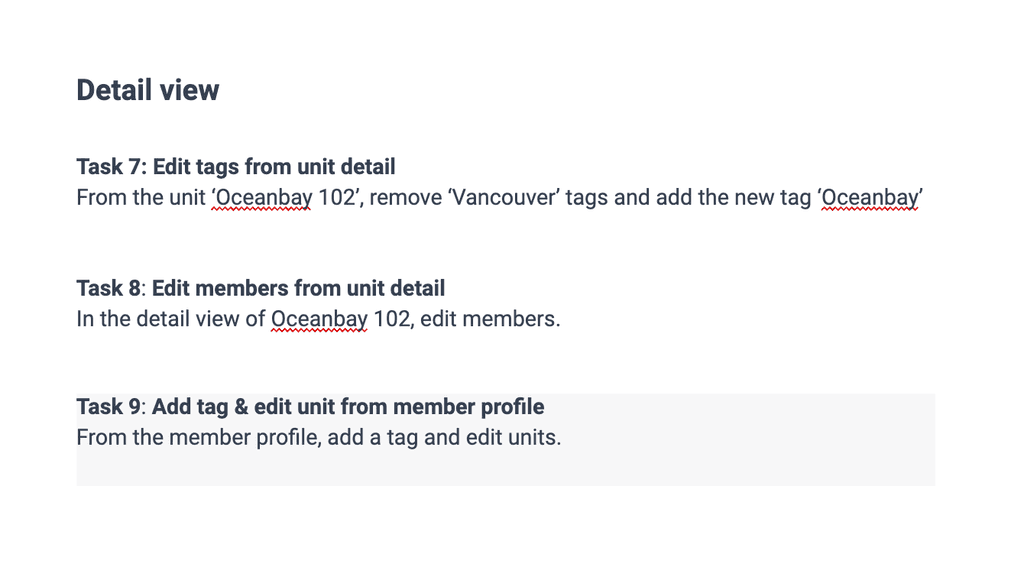Pivoting to Hotel industry
Company
Operto
Role
Lead product designer
Project Date
Apr 2023 to Dec 2023

Hotels and short-term rental managers sought a streamlined method to grant access to units for groups of staff.
Hotels and short-term rental managers sought a streamlined method to grant access to units for groups of staff.
Operto's main job is to make a automatic system that gives digital codes to guests and staff in short-term rentals and hotels. But setting up access for staff wasn't easy. Many clients have complained about not being able to assign staff to multiple units, or assign units to multiple staff members, or even put staff in specific places like property groups or access areas. Because of these problems, many big clients don't use the system and instead ask Operto's customer service team for help. The system sometimes doesn't work well, making it hard for our team to get updates.
Operto's main job is to make a automatic system that gives digital codes to guests and staff in short-term rentals and hotels. But setting up access for staff wasn't easy. Many clients have complained about not being able to assign staff to multiple units, or assign units to multiple staff members, or even put staff in specific places like property groups or access areas. Because of these problems, many big clients don't use the system and instead ask Operto's customer service team for help. The system sometimes doesn't work well, making it hard for our team to get updates.
Hotels and short-term rental managers sought a streamlined method to grant access to units for groups of staff.
Operto's main job is to make a automatic system that gives digital codes to guests and staff in short-term rentals and hotels. But setting up access for staff wasn't easy. Many clients have complained about not being able to assign staff to multiple units, or assign units to multiple staff members, or even put staff in specific places like property groups or access areas. Because of these problems, many big clients don't use the system and instead ask Operto's customer service team for help. The system sometimes doesn't work well, making it hard for our team to get updates.


Survey
To grasp the value proposition comprehensively, I collected data and conducted interviews with both the Customer Success and Sales teams. Furthermore, I analyzed the current client data on Salesforce to evaluate the potential ramifications of implementing this feature.
Based on the research, it's clear that clients with 10 or more units will benefit greatly from this initiative. The clients who have more than 10 units make up 44% of our client base, and they contribute 80% of our revenue.
Technology challenges faced by vacation operators in 2023


This year’s results saw a rapid rise in the number of respondents noting challenges with their Accounting solution. This category grew from 5% in 2021 to 10% in 2022 and finally to 17% in 2023. A similar category—Payment solutions challenges—grew from 1% in previous years to 4% in 2023. Why is this the case? This shift may be a sign that businesses formed during the pandemic are continuing to mature. With such growth, inescapable business operations (finances, accounting, bookkeeping, etc) become more complicated, often requiring more technology layers and integrations.
In 2023, what’s become easier and what’s become harder in your business?

We were interested in learning about any and all areas operators found to be easier and harder in 2023. In response to our open-ended inquiry, respondents reported a major shift in what became easier. Automation surged from 9% in 2022 to 27% in 2023, surpassing Guest communication which held fairly steady percentage-wise between 2022 (17%) and 2023 (15%), but dropped in category placement. we took a closer look at respondents by property volume and found that the struggle was most notable for managers with 35-49 properties. This indicates that, as operators scale their businesses and begin systemizing growth, Accounting remains a tough obstacle.
Have you used AI tools in any capacity for your business in the last year?


In 2023, across industries artificial intelligence (AI) played an operational role. In fact, 54% of our respondents reported using AI in their businesses over the last year. The adoption or interest in AI typically increased corresponding to the number of properties managed. This finding is not surprising given that, in general, smaller businesses typically use less technology than larger ones.
To grasp the value proposition comprehensively, I collected data and conducted interviews with both the Customer Success and Sales teams. Furthermore, I analyzed the current client data on Salesforce to evaluate the potential ramifications of implementing this feature.
Based on the research, it's clear that clients with 10 or more units will benefit greatly from this initiative. The clients who have more than 10 units make up 44% of our client base, and they contribute 80% of our revenue.
Technology challenges faced by vacation operators in 2023

This year’s results saw a rapid rise in the number of respondents noting challenges with their Accounting solution. This category grew from 5% in 2021 to 10% in 2022 and finally to 17% in 2023. A similar category—Payment solutions challenges—grew from 1% in previous years to 4% in 2023. Why is this the case? This shift may be a sign that businesses formed during the pandemic are continuing to mature. With such growth, inescapable business operations (finances, accounting, bookkeeping, etc) become more complicated, often requiring more technology layers and integrations.
In 2023, what’s become easier and what’s become harder in your business?

We were interested in learning about any and all areas operators found to be easier and harder in 2023. In response to our open-ended inquiry, respondents reported a major shift in what became easier. Automation surged from 9% in 2022 to 27% in 2023, surpassing Guest communication which held fairly steady percentage-wise between 2022 (17%) and 2023 (15%), but dropped in category placement. we took a closer look at respondents by property volume and found that the struggle was most notable for managers with 35-49 properties. This indicates that, as operators scale their businesses and begin systemizing growth, Accounting remains a tough obstacle.
Have you used AI tools in any capacity for your business in the last year?

In 2023, across industries artificial intelligence (AI) played an operational role. In fact, 54% of our respondents reported using AI in their businesses over the last year. The adoption or interest in AI typically increased corresponding to the number of properties managed. This finding is not surprising given that, in general, smaller businesses typically use less technology than larger ones.
Target Users



Competitors



Personas
The vacationer

Key characteristics
Casual
Has a decent amount of money to spend but are selective about where they spend it
Research-oriented
Trip with friends, family, or significant others, and rarely travels solo
Pain points
Missed attractions
Overspending
Goals
Guided tours
Local attractions
Sightseeing activities
Relax and recuperate before returning to the grind of their normal daily lives
Needs
Value for money
Recommendations and travel tips
They’ve done their research, so offering some guiding tips will help solidify or modify their plans
Provide them with a guide to the local area at the front desk at check-in
A map with all the top attractions clearly highlighted
Where they stay
Seek out the best value accommodation but are attracted to established brands in the hotel industry
Independent and boutique hotels will likely be their first choice
Depends on the type of trip
Vacation Rental
All inclusive resorts
Smaller B&Bs
The vacationer

Key characteristics
Casual
Has a decent amount of money to spend but are selective about where they spend it
Research-oriented
Trip with friends, family, or significant others, and rarely travels solo
Pain points
Missed attractions
Overspending
Goals
Guided tours
Local attractions
Sightseeing activities
Relax and recuperate before returning to the grind of their normal daily lives
Needs
Value for money
Recommendations and travel tips
They’ve done their research, so offering some guiding tips will help solidify or modify their plans
Provide them with a guide to the local area at the front desk at check-in
A map with all the top attractions clearly highlighted
Where they stay
Seek out the best value accommodation but are attracted to established brands in the hotel industry
Independent and boutique hotels will likely be their first choice
Depends on the type of trip
Vacation Rental
All inclusive resorts
Smaller B&Bs
Principles & Goals
Goal
01
Reduce Large Customer Churn
Reduce Large Customer Churn
Reduce Large Customer Churn
Goal
02
Reduce errors and issues managing teams
Reduce errors and issues managing teams
Reduce errors and issues managing teams
Goal
03
Increase customer self management of teams
Increase customer self management of teams
Increase customer self management of teams
Goal
04
Migration supported by new architecture and quick to set up
Migration supported by new architecture and quick to set up
Migration supported by new architecture and quick to set up
Visualizing the Logic Diagram
Before diving into creating the wireframe, I visualized the logic diagram. This approach is excellent for determining the pros and cons of each option and facilitates communication with other teams. Below are some potential pros and cons for each option:
Visualizing the Logic Diagram
Before diving into creating the wireframe, I visualized the logic diagram. This approach is excellent for determining the pros and cons of each option and facilitates communication with other teams. Below are some potential pros and cons for each option:
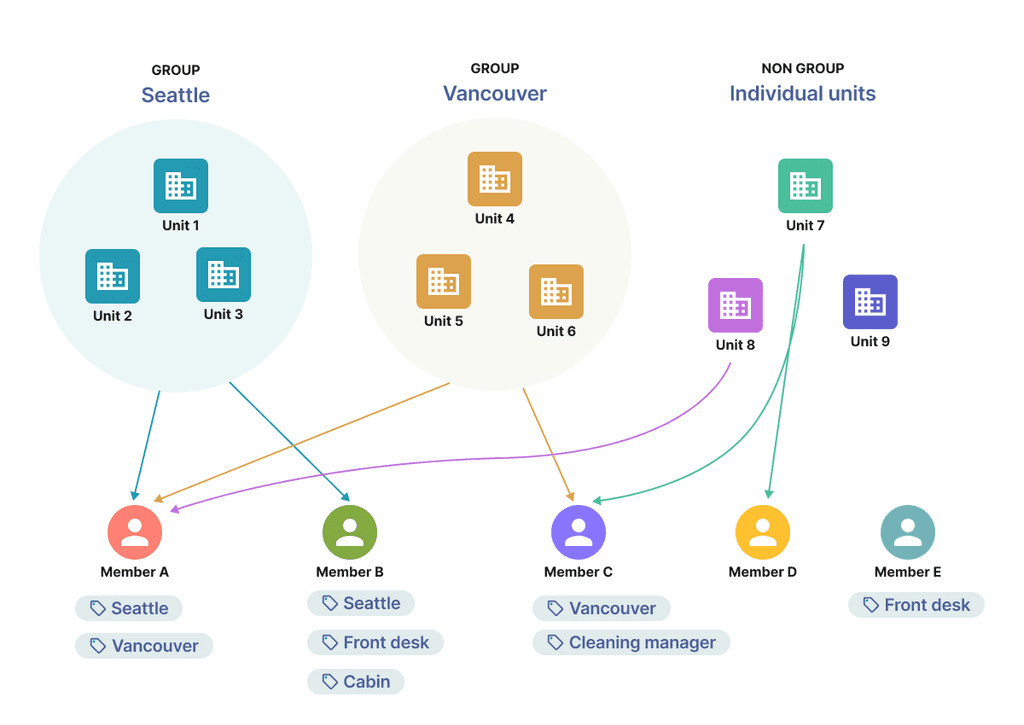
Option
Option
Option
01
01
01
Rule
Users can set up units as a group, but it's not necessary.
Each unit can belong to only one group.
Users can add tags to members, which helps find the member and assign them to the group or individual units.
Pros
Flexibility: Units are not required to belong to a group, offering flexibility in organization.
Cons
Potential User Confusion: Without clear grouping boundaries for members, users may struggle to understand how to organize units effectively during the setup process, leading to potential confusion and inefficiencies.
Setup Complexity: Requires additional setup to link units, potentially adding complexity as users may find it challenging to understand how units and groups relate
Rule
Users can set up units as a group, but it's not necessary.
Each unit can belong to only one group.
Users can add tags to members, which helps find the member and assign them to the group or individual units.
Pros
Flexibility: Units are not required to belong to a group, offering flexibility in organization.
Cons
Potential User Confusion: Without clear grouping boundaries for members, users may struggle to understand how to organize units effectively during the setup process, leading to potential confusion and inefficiencies.
Setup Complexity: Requires additional setup to link units, potentially adding complexity as users may find it challenging to understand how units and groups relate
Rule
Users can set up units as a group, but it's not necessary.
Each unit can belong to only one group.
Users can add tags to members, which helps find the member and assign them to the group or individual units.
Pros
Flexibility: Units are not required to belong to a group, offering flexibility in organization.
Cons
Potential User Confusion: Without clear grouping boundaries for members, users may struggle to understand how to organize units effectively during the setup process, leading to potential confusion and inefficiencies.
Setup Complexity: Requires additional setup to link units, potentially adding complexity as users may find it challenging to understand how units and groups relate
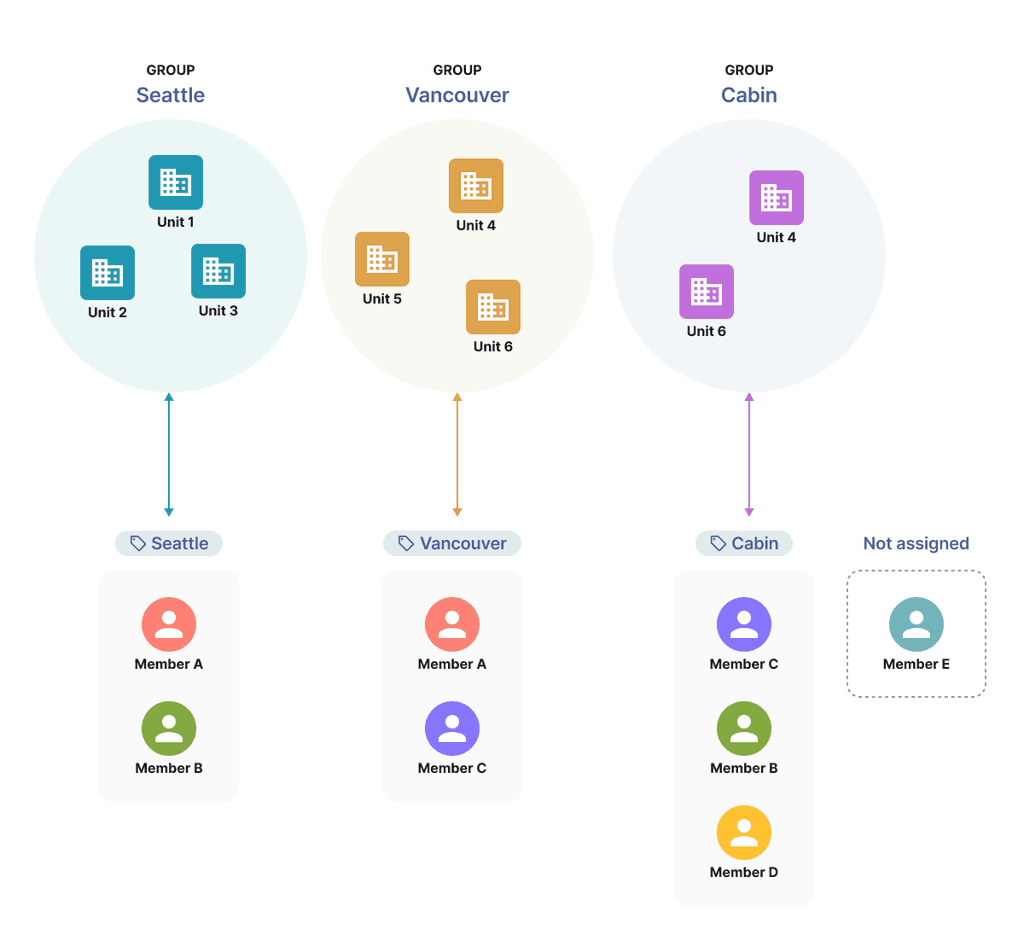
Option
Option
02
02
Rule
Each unit must be in the group Each unit must be in only one group
You can add tags to members but the selection of tags are same name as unit group name.
By adding tag to member means, automatically assign the unit to the member
Pros
Clear Unit Grouping: Each unit can belong to only one group, reducing confusion in unit assignment.
Tag Automation: Tags with the same name as the unit group can automatically assign units to members, streamlining the process.
Cons
Lack of Flexibility: Requiring units to belong to a group may limit flexibility in organization, especially for unique situations.
Dependency on Tag Names: Group assignment relies on tag names, which may lead to complications if not managed properly.
Rule
Each unit must be in the group Each unit must be in only one group
You can add tags to members but the selection of tags are same name as unit group name.
By adding tag to member means, automatically assign the unit to the member
Pros
Clear Unit Grouping: Each unit can belong to only one group, reducing confusion in unit assignment.
Tag Automation: Tags with the same name as the unit group can automatically assign units to members, streamlining the process.
Cons
Lack of Flexibility: Requiring units to belong to a group may limit flexibility in organization, especially for unique situations.
Dependency on Tag Names: Group assignment relies on tag names, which may lead to complications if not managed properly.

Option
02
Rule
Each unit must be in the group Each unit must be in only one group
You can add tags to members but the selection of tags are same name as unit group name.
By adding tag to member means, automatically assign the unit to the member
Pros
Clear Unit Grouping: Each unit can belong to only one group, reducing confusion in unit assignment.
Tag Automation: Tags with the same name as the unit group can automatically assign units to members, streamlining the process.
Cons
Lack of Flexibility: Requiring units to belong to a group may limit flexibility in organization, especially for unique situations.
Dependency on Tag Names: Group assignment relies on tag names, which may lead to complications if not managed properly.
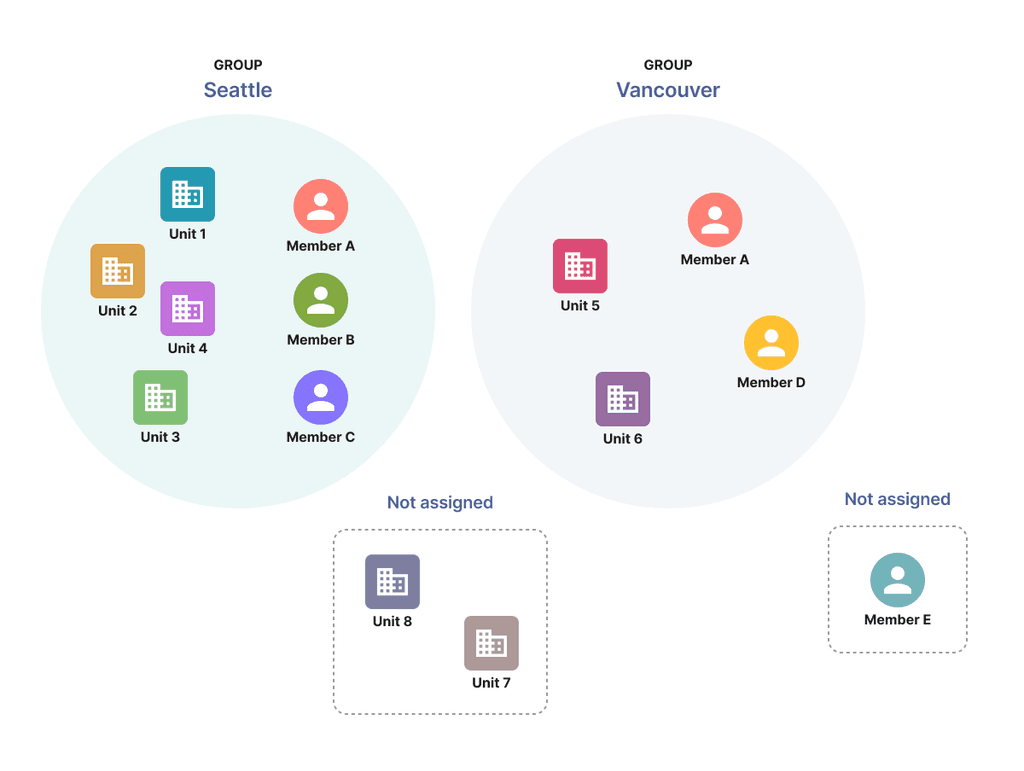
Option
Option
03
03
Rule
Units and members can belong to a group.
Belonging to the same group assigns units to members in that group.
Users can add tags to members, but they're only for helping find the member.
Pros
Simplified Assignment: Units are assigned to members in the same group, streamlining the assignment process.
Tag Usage for Member Identification: Tags can be added to members to facilitate finding them.
Cons
Potential for Disorganization: Not requiring units to belong to a group may lead to disorganization if not managed properly.
Rule
Units and members can belong to a group.
Belonging to the same group assigns units to members in that group.
Users can add tags to members, but they're only for helping find the member.
Pros
Simplified Assignment: Units are assigned to members in the same group, streamlining the assignment process.
Tag Usage for Member Identification: Tags can be added to members to facilitate finding them.
Cons
Potential for Disorganization: Not requiring units to belong to a group may lead to disorganization if not managed properly.

Option
03
Rule
Units and members can belong to a group.
Belonging to the same group assigns units to members in that group.
Users can add tags to members, but they're only for helping find the member.
Pros
Simplified Assignment: Units are assigned to members in the same group, streamlining the assignment process.
Tag Usage for Member Identification: Tags can be added to members to facilitate finding them.
Cons
Potential for Disorganization: Not requiring units to belong to a group may lead to disorganization if not managed properly.
Decision
After creating the diagram, I conducted a meeting with the customer success team and engineering teams to identify any technical constraints. For the results, we decided to go to Logic option 3
Workflow & Wireframe
Workflow & Wireframe
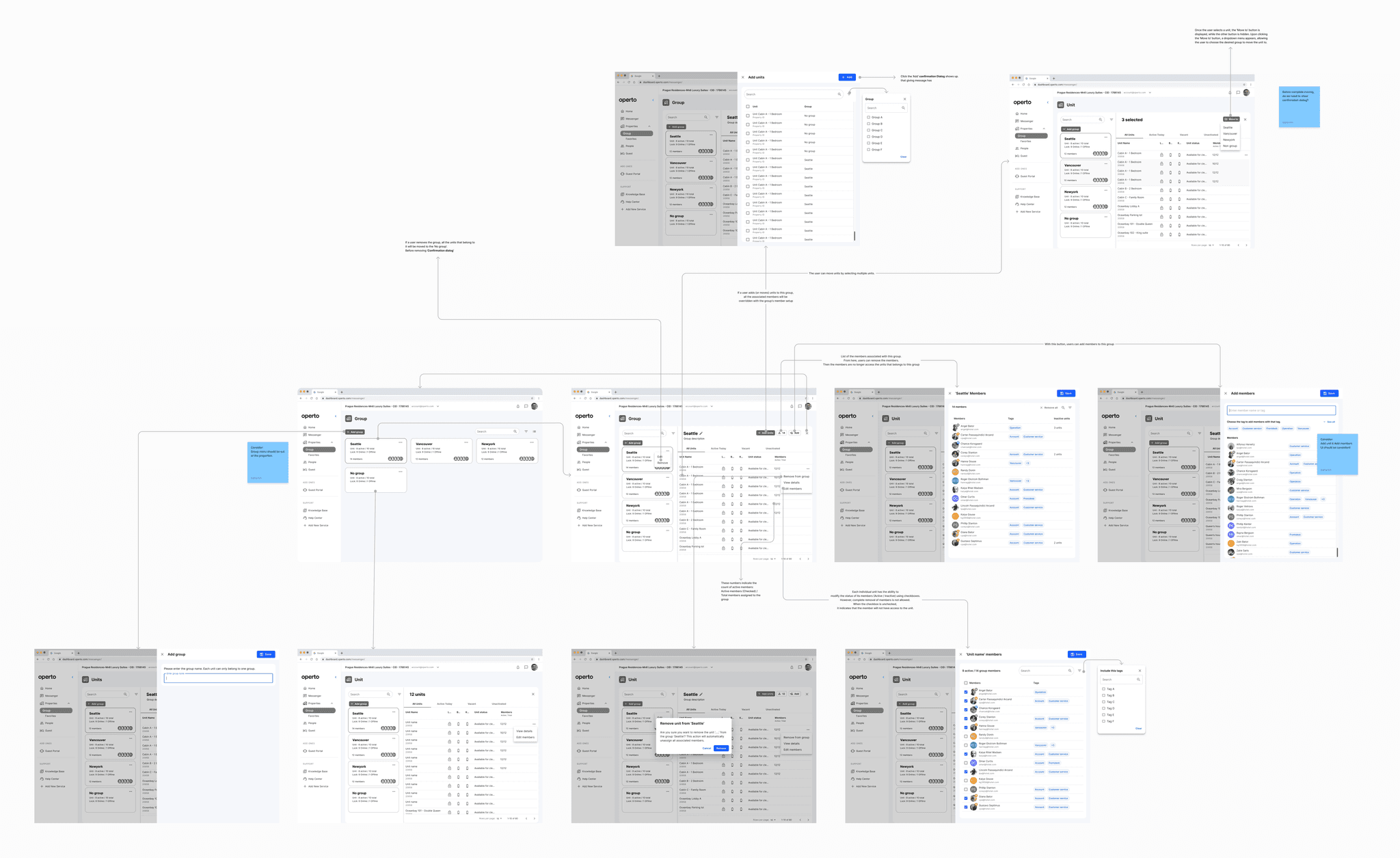

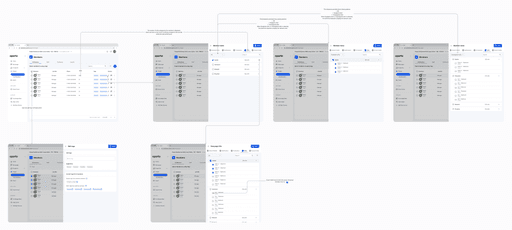
1st prototype for user testing
User testing
After creating the prototype, I devised testing tasks and conducted user testing, with a total of 8 internal staff and 5 clients participating.
The results revealed an improvement in usability compared to previous iterations. However, a common issue arose concerning user confusion with the member list. While editing, users encountered the list of members, with 30% mistakenly assuming it comprised all potential members available for addition. This misunderstanding likely stemmed from task-specific prompts that may have suggested the action of 'adding members.' As a result, users attempted to add members, believing the list represented available additions rather than the existing group members.
To address this issue, I decided to enhance the editing process for the member list.
User testing
After creating the prototype, I devised testing tasks and conducted user testing, with a total of 8 internal staff and 5 clients participating.
The results revealed an improvement in usability compared to previous iterations. However, a common issue arose concerning user confusion with the member list. While editing, users encountered the list of members, with 30% mistakenly assuming it comprised all potential members available for addition. This misunderstanding likely stemmed from task-specific prompts that may have suggested the action of 'adding members.' As a result, users attempted to add members, believing the list represented available additions rather than the existing group members.
To address this issue, I decided to enhance the editing process for the member list.
